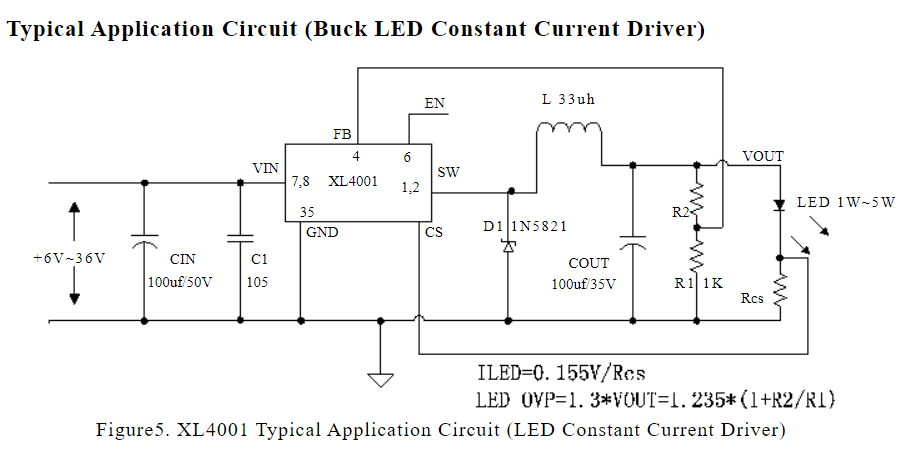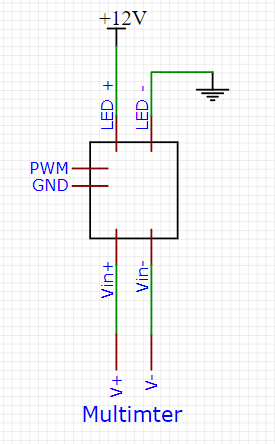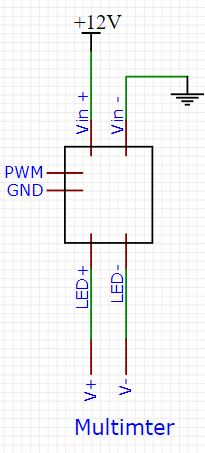I am currently working on a prototype system that uses these 3w LED drivers (I am using the one with the picture at the right). It uses the XL4001E1 CC DC-DC converter capable of outputting 700mA to drive 3w LEDs, datasheet referred to found here.
I was testing each of the modules (since I bought three) to see if they were working using a multimeter powering it with 12V supply. Due to carelessness, I accidentally powered one of the modules on the LED+- pins and connected the multimeter short circuit at the Vin+- pins. Schematic of my wirings are below for clarity:
While it was powered, I saw small sparks on the positive wires (I was using alligator clips between the components since I was testing). When I was measuring short circuit current across the Vin+-, I saw current dropping from 290mA to 270mA slowly (I was expecting constant 690-700mA). I was confused and only by that time I only realized that I was wiring it wrong. The module was heating but, thankfully, it didn't burn or explode.
When I wired it correctly this time as shown here:
When I clipped the wire across the LED+- to the multimeter to take short circuit current readings, there was a small spark coming off from the positive wire of Vin+- and I didn't get any current reading. With my lack of understanding of some electronics concepts, here are my questions:
1.) What happened during the first scenario? I couldn't find the exact schematic diagram of this module, however, the datasheet does provide a schematic appropriate for LED driving applications which I think is somehow similar to the module. Here it is:

Is the SMD component damaged? How come the driver module significantly heated up? In the scenario the circuit was left longer as it is, could the capacitor have exploded?
2.) How can I properly check if the individual components are still working? Can the module still be salvaged by replacing some of the components?




What happened during the first scenario?- I think you know what happened (or what went wrong). Throw it away and buy a new one. \$\endgroup\$